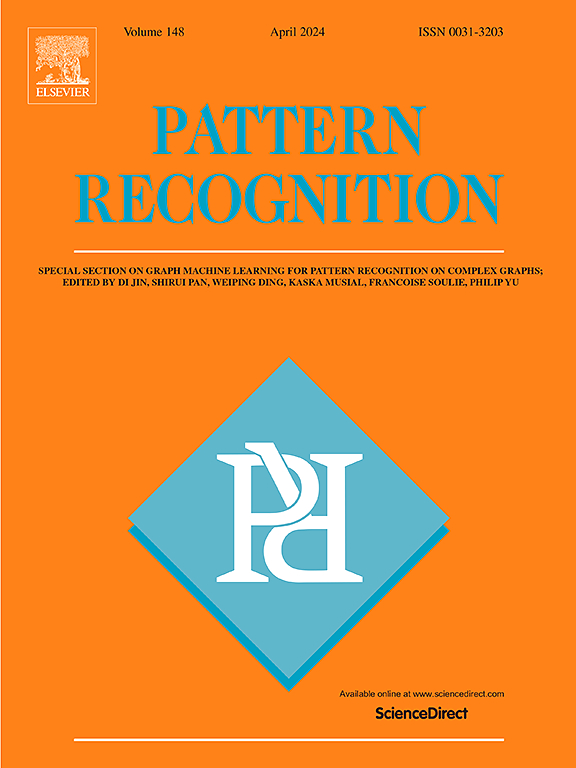UR2P-Dehaze: Learning a Simple Image Dehaze Enhancer via Unpaired Rich Physical Prior
IF 7.6
1区 计算机科学
Q1 COMPUTER SCIENCE, ARTIFICIAL INTELLIGENCE
引用次数: 0
Abstract
Image dehazing techniques aim to enhance contrast and restore details, which are essential for preserving visual information and improving image processing accuracy. Existing methods may struggle to capture the physical characteristics of images fully and deeply, which could limit their ability to reveal image details. To overcome this limitation, we propose an unpaired image dehazing network, called the Simple Image Dehaze Enhancer via Unpaired Rich Physical Prior (UR2P-Dehaze). First, to accurately estimate the illumination, reflectance, and color information of the hazy image, we design a Shared Prior Estimator (SPE) that is iteratively trained to ensure the consistency of illumination and reflectance, generating clear, high-quality images. Additionally, a self-monitoring mechanism is introduced to eliminate undesirable features, providing reliable priors for image reconstruction. Next, we propose Dynamic Wavelet Separable Convolution (DWSC), which effectively integrates key features across both low and high frequencies, significantly enhancing the preservation of image details and ensuring global consistency. Finally, to effectively restore the color information of the image, we propose an Adaptive Color Corrector that addresses the problem of unclear colors. The PSNR, SSIM, LPIPS, FID and CIEDE2000 metrics on the benchmark dataset show that our method achieves state-of-the-art performance. It also contributes to the performance improvement of downstream tasks. The project code is available at https://github.com/Fan-pixel/UR2P-Dehaze.
UR2P-Dehaze:通过Unpaired Rich Physical Prior学习一个简单的图像去霾增强器
图像去雾技术的目的是增强对比度和恢复细节,这是保持视觉信息和提高图像处理精度的必要条件。现有的方法可能难以充分和深入地捕捉图像的物理特征,这可能限制了它们揭示图像细节的能力。为了克服这一限制,我们提出了一种非配对图像去雾网络,称为通过非配对富物理先验(UR2P-Dehaze)的简单图像去雾增强器。首先,为了准确估计模糊图像的照度、反射率和颜色信息,我们设计了一个共享先验估计器(SPE),通过迭代训练确保照度和反射率的一致性,生成清晰、高质量的图像。此外,引入了一种自我监控机制来消除不希望出现的特征,为图像重建提供了可靠的先验。接下来,我们提出了动态小波可分离卷积(DWSC),该方法有效地整合了低频和高频的关键特征,显著增强了图像细节的保存并确保了全局一致性。最后,为了有效地恢复图像的颜色信息,我们提出了一种自适应颜色校正器来解决颜色不清晰的问题。基准数据集上的PSNR、SSIM、LPIPS、FID和CIEDE2000指标表明,我们的方法达到了最先进的性能。它还有助于下游任务的性能改进。项目代码可从https://github.com/Fan-pixel/UR2P-Dehaze获得。
本文章由计算机程序翻译,如有差异,请以英文原文为准。
求助全文
约1分钟内获得全文
求助全文
来源期刊

Pattern Recognition
工程技术-工程:电子与电气
CiteScore
14.40
自引率
16.20%
发文量
683
审稿时长
5.6 months
期刊介绍:
The field of Pattern Recognition is both mature and rapidly evolving, playing a crucial role in various related fields such as computer vision, image processing, text analysis, and neural networks. It closely intersects with machine learning and is being applied in emerging areas like biometrics, bioinformatics, multimedia data analysis, and data science. The journal Pattern Recognition, established half a century ago during the early days of computer science, has since grown significantly in scope and influence.
 求助内容:
求助内容: 应助结果提醒方式:
应助结果提醒方式:


